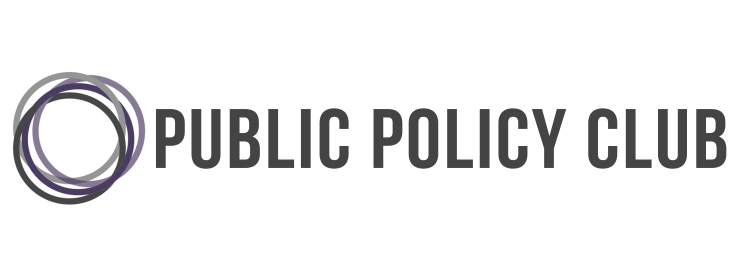By Eden Li
Co-governance: Friend or Foe?
The recent focus on strengthening co-governance within Crown policy has been received with both confusion, and even outrage in some quarters. But what does co-governance actually entail? Will this contentious form of policy work in practice? One of the biggest questions in public policy has become whether government entities should encompass novel co-governance models, or stick with the status quo. From the swirling response to Three Waters, to the tensions boiling over Te Urewera, co-governance has undoubtedly become one of the most polarising policy issues facing Aotearoa today. However, it is also simultaneously one of most misunderstood terms within the policy lexicon.
Co-governance: What Is It?
Co-governance is a policy mechanism that places the Crown and Maori Iwi in the “same room” when it comes to management of governmental entities and state-owned enterprises. The implementation of a “same room” mentality is about giving shared power and responsibility. This is what differs co-governance from co-management, which allows for cooperation between the Crown and Iwi within a governmental entity, but the ultimate decision power lies with the former. Co-Governance on the other hand, grants this power to both. This attempts to live up to the principles of the Treaty of Waitangi, namely Article Three which is concerned with Māori rights and privileges. Whether co-governance has granted these rights and privileges, is up for debate.
Pan River Cooperation – It Can Be Done Right
Though co-governance has made a reappearance on headlines recently, it is not a new concept. The 1986 State-Owned Enterprises Act paved the way for co-governance, seeing initial successes in the following decades.
However, the crowning successes of co-governance was found in the 2012 changes made to the Waikato River Authority. Under the 2012 Te Waihora Co-Governance Agreement, local Iwi members from Waikato-Tainui, Tuwharetoa, Raukawa, Maniapoto and Te Arawa Confederation, were included at a decision-making level on the Waikato River Authority. This allowed repairs to be made to the strained relationship between the Crown and Iwi, as this gave local Iwi the deciding power to solve the most significant problem that faced the River, algal bloom. The blooms had been noted by the Crown prior to 2012, it lacked the teeth to take true preventative steps. However, as co-governance involves working with local stakeholders, in this case the local Iwis who had seen their abilities to use the waterway diminish over generations, action was taken promptly. For the wider population, the decisions taken by the post-2012 Authority also had immeasurable impacts. The reduction of algal blooms reduced the potential development of a major public health risk.
Although historical land confiscations still plague the relationship between the Crown and local iwis, co-governance has provided a meaningful stepping stone for future cooperation by working on areas of mutual importance together. Whilst co-governance decisions, as in the case of the Waikato River Authority, have been mutually beneficial for the Crown, Iwi and the general population, good implementation between all parties played a major role in upholding the Waikato Authority’s integrity. In the current frenzy surrounding the pitfalls of co-governance, one case stands out as an example of what occurs when implementation falls short.
Te Urewera – a Lesson on Limits
The Te Urewera Act 2014 was a landmark case in the field of co-governance, as it would see Te Urewera cease to be a National Park and be formally given its own governance authority. However, the proposals set by the Act had several points knocking against it. To start, the Tuhoe Iwi of which Te Urewera’s jurisdiction would find itself under, did not sign the Treaty of Waitangi. The ensuing can of worms this opened up has raised the question of how the Crown would approach other tribes that did not sign the Treaty, yet wanted co-governance. The creation of the Act disturbed the uneasy equilibrium found between the Crown and Iwi, increasing tensions. This was exacerbated by the relatively prolonged timeframe the Act took to be passed due to ongoing negotiations. This was partially due to the non-signatory status of the Tuhoe, which frustrated Iwi members. There is still no clear method for dealing with said delays, such as a clear, rolling implementation. Therefore, this will likely remain a headache for other tribes pursuing a similar outlook well into the future.
The key principles of the new Act are: Te Urewera ceases to be a national park and is vested in itself as its own legal entity; and Te Urewera will own itself in perpetuity with the Board to speak as its voice to provide governance and management in accordance with the principles of the Act.
Additionally the co-governance decisions undertaken by DOC and Tuhoe Iwi to de-establish Te Urewera as a National Park have been the subject of great amounts of friction between users of Te Urewera and Tuhoe Iwi. The joint implementation had, most significantly, failed to adequately address questions surrounding the rule of law, and how Tuhoe will guarantee that any member of the public will be allowed to continue to access the area.
Additionally, public discontent would also come with the planned destruction of approximately 19 Department of Conservation (DOC) huts without a sufficient period of public consultation. Amongst the loudest critics of the demolition, The Hui reporter, John Boynton, also raised how the demolitions would wipe away the huts’ own significance to the “culture and heritage” of New Zealanders (Brettkelly, 2022). This is not to mention the significant safety role the huts also played as contingency shelters for hikers trapped under unfavourable conditions. The public outcry would eventually result in a 2022 High Court Order to stop all hut demolitions until a favourable solution could be found. The result of this order has been the fall of Crown-Tuhoe Iwi relations to levels not seen in recent years. Te Urewera presents to the Crown, Tuhoe Iwi, and the public the importance of proper consultation, not just between the Crown and Iwi, but also the public too. It also shows how the conflicts between Iwi Taonga and public Taonga must be clarified to prevent future conciliatory gestures such as the 2014 Act from having the opposite effect.
A Tough Road Ahead?
Whilst co-governance has fallen into rut over Te Urewera, the Crown has continued to push for further co-governance in areas such as public water management. The debate over the proposed Three Waters Reform, though not entirely limited to the co-governance question, has highlighted the tri-pronged “us versus them” tug-of-war between the Crown, Iwi and the public that has increasingly been played out. Unfortunately, this has manifested in the slow decay of social cohesion that whilst admittedly was not watertight, has now begun showing its cracks. Most concerningly, investigations by experts in early 2022 had shown massive upticks in anti-Maori sentiments, much of which was attributed to the increasing prominence of co-governance within public policy. The response from the government was swift, with former Race Relations Commissioner, Meng Foon, commenting that this uptick in Maori hostility must be accompanied by “helping our community understand what co-governance is” (Sherman, 2022). Whilst this is a start, much work also has to be conducted over increasing public consultation, one of the major stress points, as demonstrated by the fallout over Te Urewera.
Properly integrated co-governance has true potential in providing positive synergies between Crown, Iwi, and public interests. The task that both current and future co-governance projects now face, would be to ensure that proper consultation always occurs. The failure to do so runs the risk of transforming co-governance into the social powder keg that Aotearoa would rather avoid.
Bibliography
https://www.1news.co.nz/2022/08/11/explainer-what-is-co-governance/
https://oag.parliament.nz/2016/co-governance/part1.htm
https://www.lawa.org.nz/learn/factsheets/toxic-algae/
https://shorthand.radionz.co.nz/the-dirty-truth-about-the-waikato-river/
https://www.1news.co.nz/2022/05/31/concern-over-recent-increase-in-anti-maori-sentiment/




